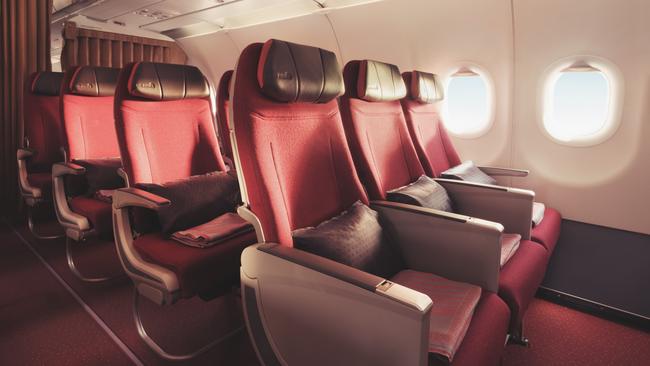Airlines spruce up premium cabins to woo luxury-loving Australian travellers
Australian travellers’ enthusiasm for premium cabins has caught the attention of international airlines, who are now racing to upgrade their products on down under routes.

The strength of demand for premium cabins on flights in and out of Australia has caught the attention of international airlines, with more sending freshly refurbished aircraft on Down Under routes.
Chilean carrier LATAM is the latest to give its Boeing 787 cabins a makeover, ahead of the resumption of non-stop Sydney-Santiago flights on October 28.
The renovation will include a new premium business cabin with Recaro R7 Suites and coveted privacy doors, with LATAM the first airline group in South America to offer that feature.
Economy class seats will also be completely refurbished with ergonomic seats designed to provide more space and comfort, while economy-plus passengers will have a greater recline, footrests and exclusive luggage space.
LATAM Oceania manager Christopher Ellis said the renovations would position the airline as an industry leader.
“With a design that reflects attention to the finest details, our new cabins have been created to offer a world-class travel experience,” said Mr Ellis.
“The new premium business seats mark a significant leap forward, combining comfort, privacy and elegance.”

LATAM’s move follows cabin upgrades by Emirates, British Airways and Cathay Pacific in the past 18 months, as demand for premium seats shows no sign of cooling.
Qantas International chief executive Cam Wallace recently revealed premium cabins were performing better than economy around the world.
“More people are prepared to pay more money to sit in premium cabins,” Mr Wallace said.
“That plays well to the investment choices we’ve made (in premium dense cabins) and that plays well to our future.”
In an effort to compete with the likes of Qantas, Emirates and Singapore Airlines, Air India is investing close to $600m in cabin refurbishments of its legacy fleet, and spending billions more on 470 brand new aircraft for domestic and international routes.
Air India CEO Campbell Wilson said Tata Group was positioning the airline for greatness after it recently returned to private ownership after 69 years as a government-owned carrier.
“We have a basket of airlines – we say the comparator set – and it’s really the tier one national carriers, of which Australia has one as well,” Mr Wilson said.

“That’s what we’re aiming for – world class, high quality global carrier but with an Indian heart.”
The one issue common to all airlines sprucing up their fleets or awaiting new aircraft is supply chain delays, particularly with regards to new seats.
Mr Wilson said the seat producers had scaled down during the pandemic and lost skilled staff. “Business and first class seats operate on a platform, but they are quite heavily customised by the airline and the manufacturer typically has over-estimated their capability to do these customisations, get them certified by the regulators and get them produced,” said Mr Wilson.
“So many airlines are now being constrained in their deliveries by the shortage of seats.”

As a result it could be a while before Australian travellers see new Air India product on Boeing 787s, operating routes from Sydney and Melbourne to Delhi and Mumbai.
Mr Wilson’s best estimate for when Air India will be able to expand its international network significantly is “2026 or 2027”, because that is when most new aircraft will arrive.
At that point he hopes Air India will become more of a hub carrier, like Emirates and Singapore Airlines, and see more Australian passengers.
“There’s not a lot of traffic from Australia using India as a connecting point to go beyond (but) that will change as we build out the network,” said Mr Wilson.
“We want to be prudent about who we’re communicating our product to at the moment, and until we can offer the product on the A350 across the whole fleet, we don’t want to make promises we can’t keep.”




To join the conversation, please log in. Don't have an account? Register
Join the conversation, you are commenting as Logout